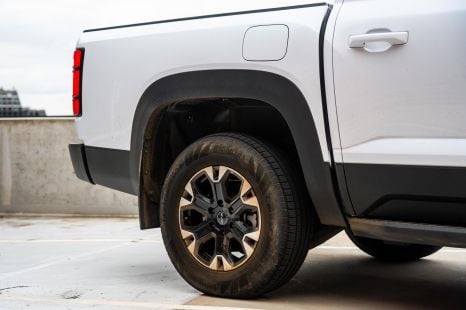

Ben Zachariah
CarExpert's top five ute reviews of 2025
7 Minutes Ago
The full-fat Range Rover is still the benchmark in the full-sized luxury SUV segment. It's even better with a mild-hybrid six under the bonnet.

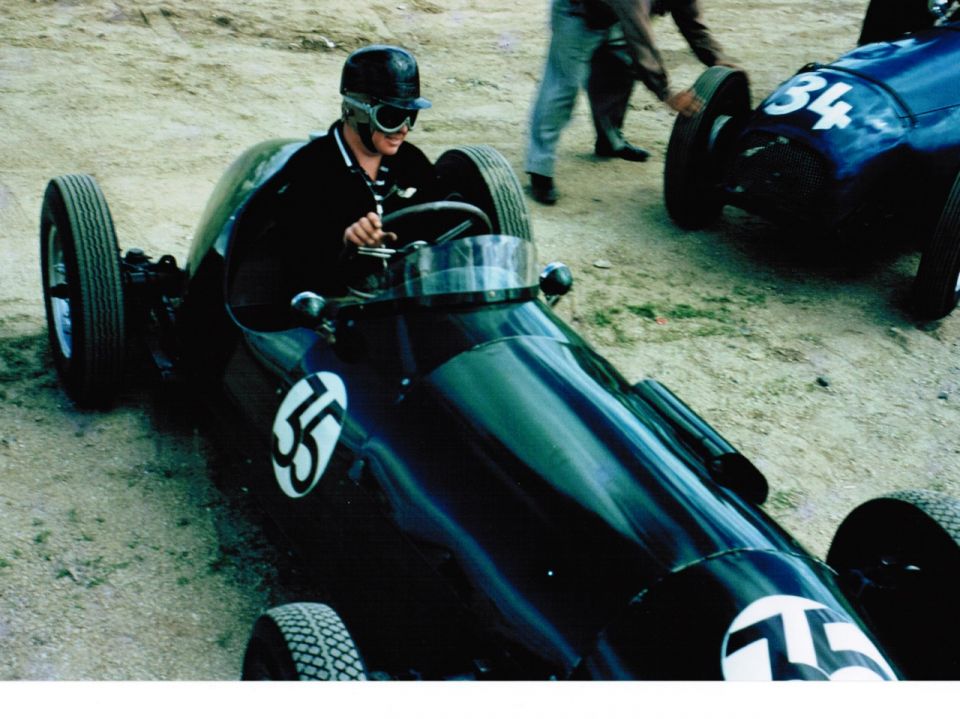

Senior Road Tester
New from
$201,031
excl. on-roads

Senior Road Tester
New from
$201,031
excl. on-roads


Senior Road Tester
New from
$201,031
excl. on-roads

Senior Road Tester
New from
$201,031
excl. on-roads
Quickly see how this car stacks up against its competition. Select any benchmark to see more details.
Where expert car reviews meet expert car buying – CarExpert gives you trusted advice, personalised service and real savings on your next new car.
I grew up surrounded by English built cars, the direct result of my old man’s passion for anything with a Land Rover or Jaguar badge adorning the grille.
In his heyday there were no less than six such vehicles parked under the house. As a former racer of cars and motorcycles he tended to go for stuff with a bit of firepower – hence the Daimler Double-Six and 1.5 Series Jaguar E-Type, which was meticulously tuned by his old race mechanic for maximum performance when required.


None of this stuff was new. The E-Type was purchased from a Squadron Leader at the Williamtown Air Force base who was selling his coupe and convertible, and yours truly found the Daimler scouring the Manly Daily classifieds and thought it sounded like a bargain at $11,000. We ended up paying $10,500.
There was a Rolls-Royce Silver Shadow parked there too, which he’d picked up from a dealer mate in Melbourne for similar money to the E-Type. He believed the Roller was far and away the best-built motorcar on the planet, despite the Citroen suspension components clearly visible in the engine bay.
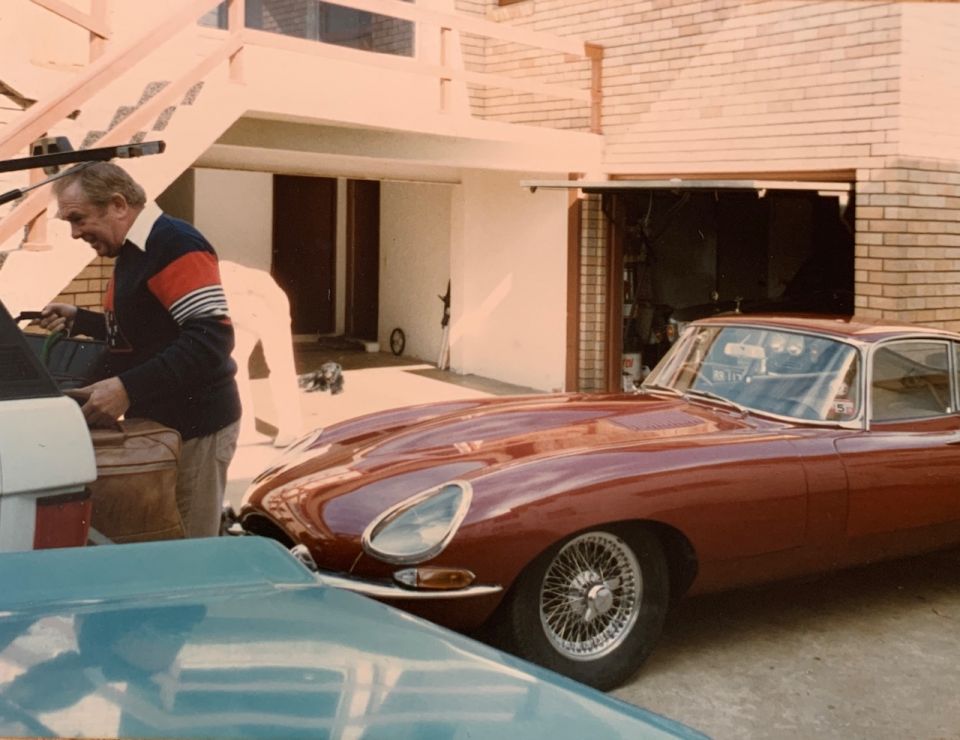
There were no reliability issues with any of the stuff – none that I was aware of at least, though he ran a forklift hire business with plenty of skilled mechanics on hand to sort out the exotic stuff when it required attention.
There was also 1942 Ford Jeep (made under licence from Willys) which had seen action in the Middle East and a Series 11 Land Rover, later joined by the only new car he’d ever bought up to that point – a first-generation, two-door Range Rover.
He put a lot of miles on that vehicle, well over 200,000. My recollection was it never missed a beat, although he often told the rather entertaining story that on the precise day the factory warranty expired the right-rear door handle simply fell off.
Call it indoctrination, or just call me a chip off the old block, but I’ve always had a soft spot for Range Rovers. I’ve owned a classic four-door Vogue and a second-generation 4.0, as well as a Discovery Sport. This is a long-winded way of disclosing my affinity for the Range Rover brand.
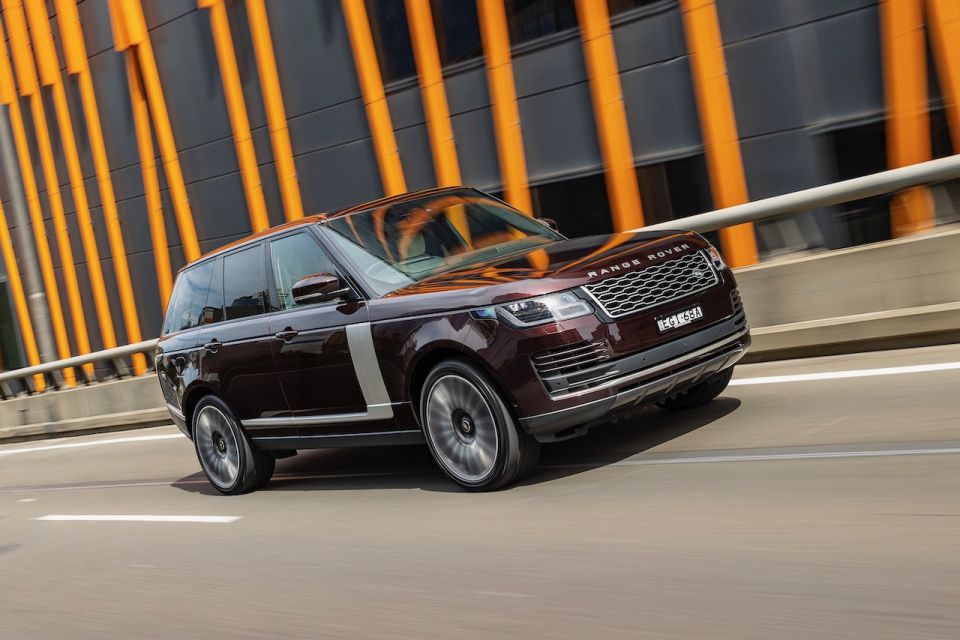
Let’s face it though, even despite today’s veritable feast of high-performance premium SUVs – many of which are quicker and more dynamic – there’s still nothing quite like a Range Rover Vogue for presence, ride comfort, and off-road capability.
And while big-displacement V8s have been best in Range Rovers, with silky-smooth pulling power and aural delight, there’s a brand-new powertrain that’s worth a look.
The Range Rover Vogue P400 is the new kid on the block, with a 3.0-litre inline-six with both turbo- and supercharging working in concert with mild-hybrid technology for brisk performance and frugal economy to boot.
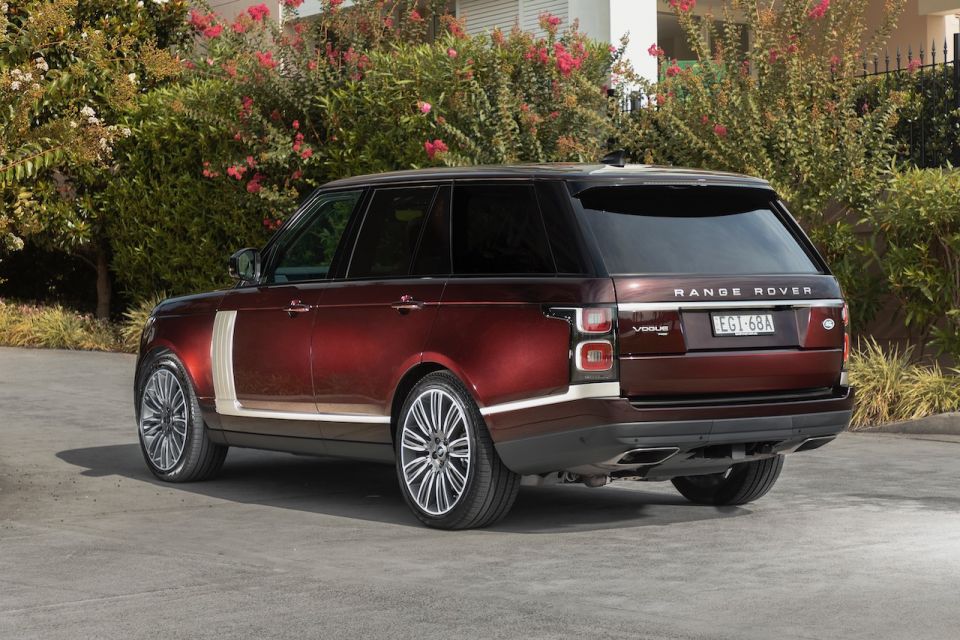
There’s some good news here. Apart from the entry-level Range Rover Vogue 3.0-litre V6 diesel priced from $196,102 before on-road costs, this mild-hybrid petrol version is also one of the least expensive at $201,395 before on-roads.
We can’t in all seriousness call it a bargain, it looks affordable compared to the range-topping Range Rover SVAutobiography LWB, which will set you back more than $403,000 before on-roads.
Comparisons with other makes and models are mandatory for any new car buyer, but finding direct Range Rover rivals has always been a difficult task. It comes down to its sheer breadth of capability across multiple disciplines.
On the one hand, you have stately opposition such as the entry-level Bentley Bentayga, but it wears a pre-option price $334,700 before on-road costs. Just don’t ask it to follow the Range Rover up a muddy ravine or through a waterlogged quagmire.
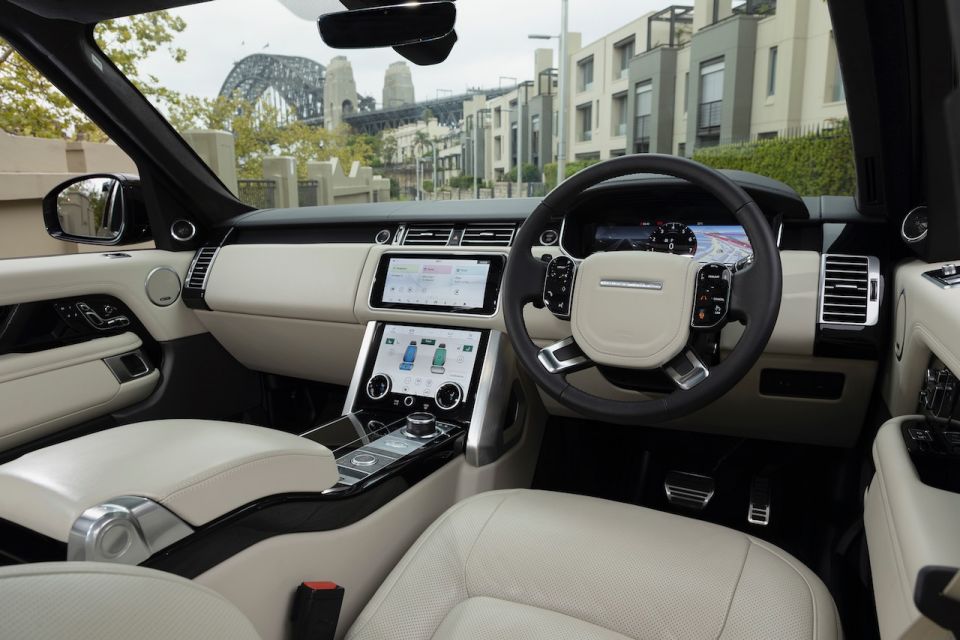
Let’s face it, the sole reason the Rolls-Royce Cullinan exists is the success of the full-fat Range Rover over the last 50 years. It single-handedly created the luxury SUV segment itself back in 1969, long before other carmakers had even imagined such a vehicle.
There’s also the issue of design and aesthetics, something Range Rover has traded on from the very beginning.
More closely-priced competitors to the regular wheelbase Range Rover include the Mercedes-Benz GLE, GLS, or even G-Class – all worthy competitors and all less expensive, but not quite like-for-like rivals.
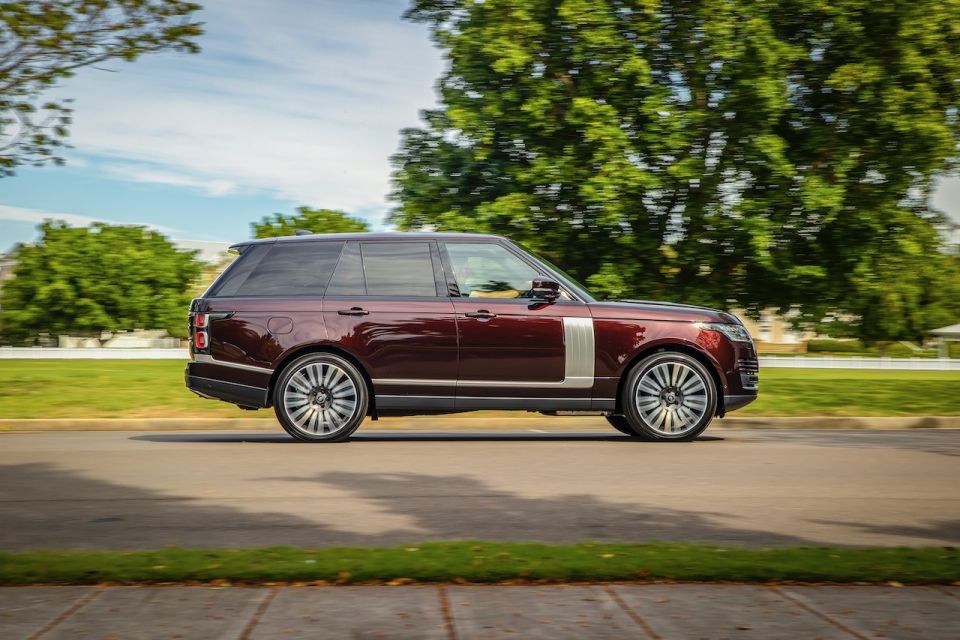
Buy your new car without the stress. It's fast, simple and completely free.

Great service from Travis and team, second time I have used this business would not hesitate to recommend them to anyone
Craig C.
Purchased a Ford Ranger in Sunshine Coast, QLD
CarExpert helped Craig save thousands on his Ford Ranger, now let us save you on your next new car.
Find a dealIt might be on the low end of the Range Rover line-up, but the P400 still features the usual trimmings, starting with the perforated Windsor leather upholstery which seems to extend everywhere – from the door cards to the dash, and everywhere in between.
If not the super-soft leather, the real brushed metal accents, heavily-lacquered piano black trim, or ebony-coloured headliner will grab your attention. Forget business class folks, this is a genuine first-class experience.
Standard equipment inventory is extensive and impressive, but it would want to be for $200,000.
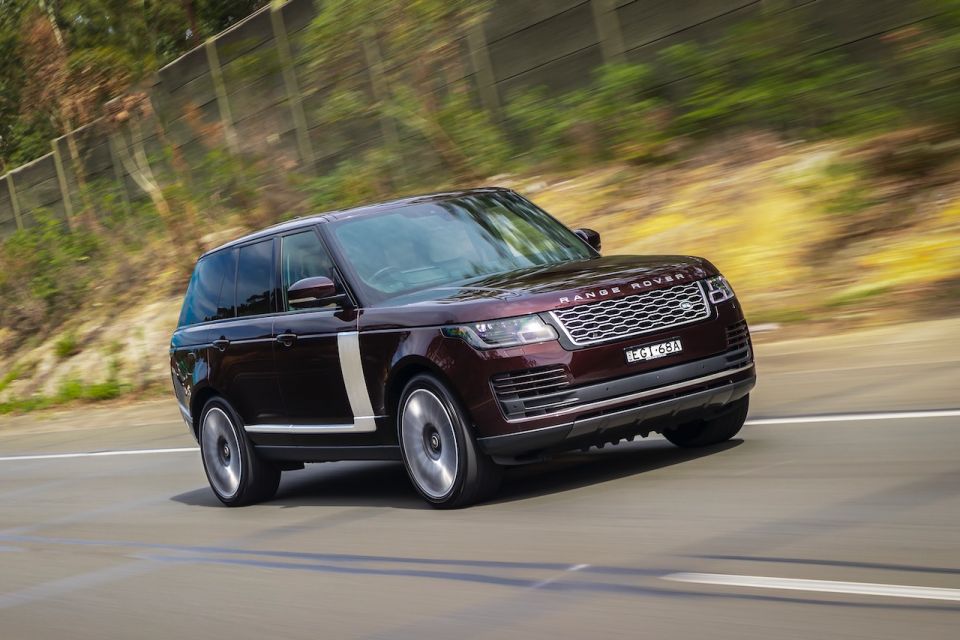
In order to deliver the kind of ride comfort expected of an SUV in this segment, there’s electronic air suspension with adaptive dynamics, as well as automatic access height that lowers the vehicle to make it easier to clamber in and out. It’s a relief for shorties like this tester at 175cm.
The flooring in the boot is more like plush carpet, as are the floor mats, and while the ivory leather seats are a delightful match with the Rosella Red Metallic paint, it really is the last colour you want given its ability to attract dirt. Thankfully, there’s plenty to choose from.
The power door mirrors are also auto-dimming and heated with memory, while the auto headlamps are state-of-the-art Matrix LED units allowing the car to create shadows around oncoming cars and avoid dazzling them.
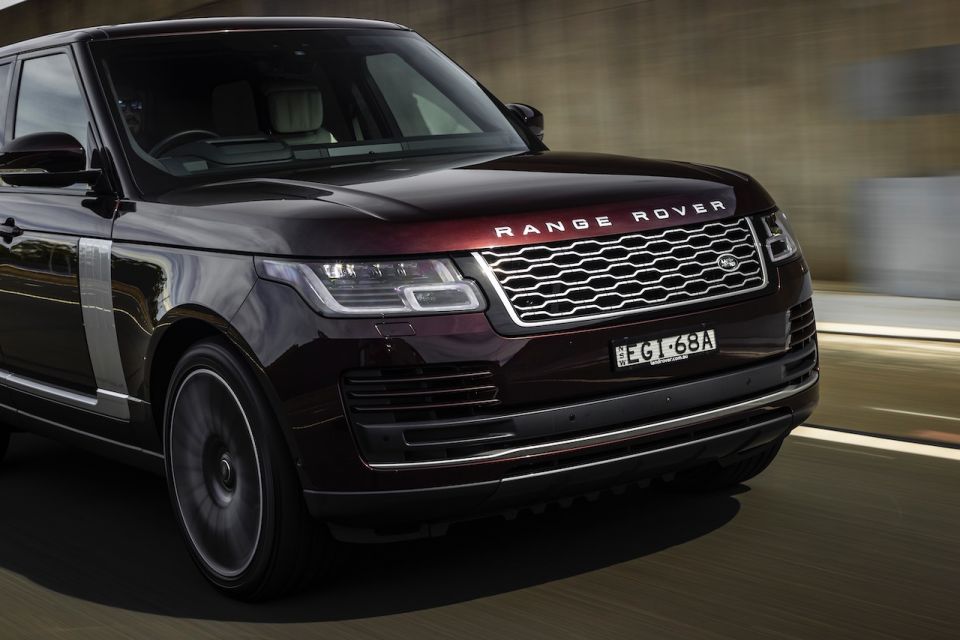
The windscreen is solar-reducing and laminated to reduce outside noise inside the cabin, as is the front and rear side glass.
Everything is electrically-operated and you get ambient lighting, three-zone climate control, a powered tailgate with gesture control, an electrically-adjustable steering column, and soft-close doors.
There are three high-definition screens; for the instrument display, infotainment and climate control, including seat heating and cooling. The latter are 10-inch touchscreen units with haptic feedback. The digital instrument display is enormous and fully configurable, and there’s a 10-inch full-colour projection head-up display too.
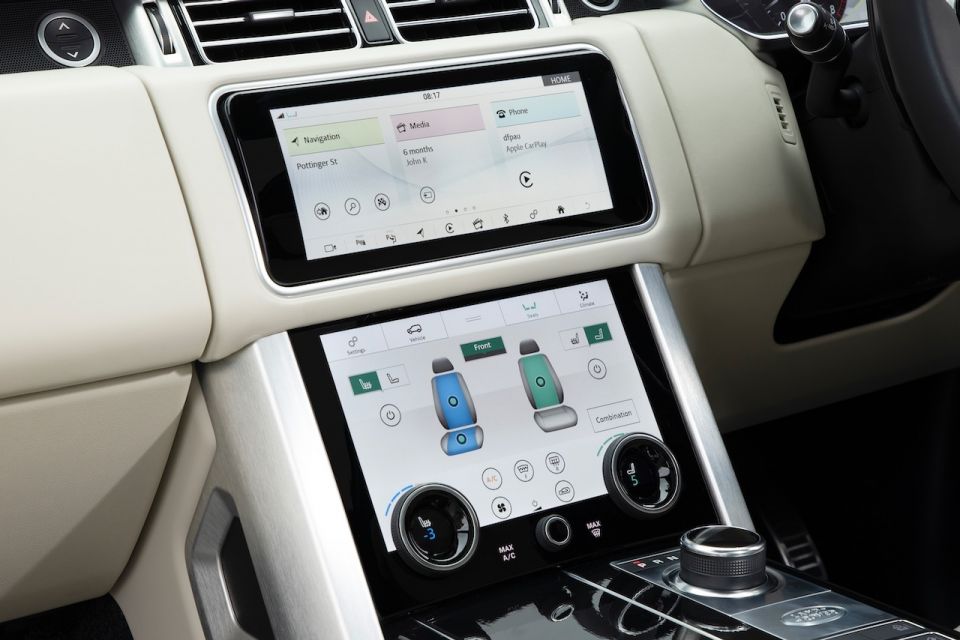
There’s nothing wrong with the standard 380W Meridian sound system. It has 13 speakers and a dual-channel subwoofer, but like any high-end luxury vehicle there’s plenty of options on offer if you have the means.
Our tester was fitted with the 825W Meridian audio with 19 speakers for $2390, along with 22-way heated and cooled, massaging front pews with power reclining heated and cooled rear seats for $4900.
It was also equipped with the trick Pixel-laser LED headlamps mentioned earlier for $6940 (ouch), and 22-inch Diamond-turned finish wheels for $5960. They’re nice, but not that nice.
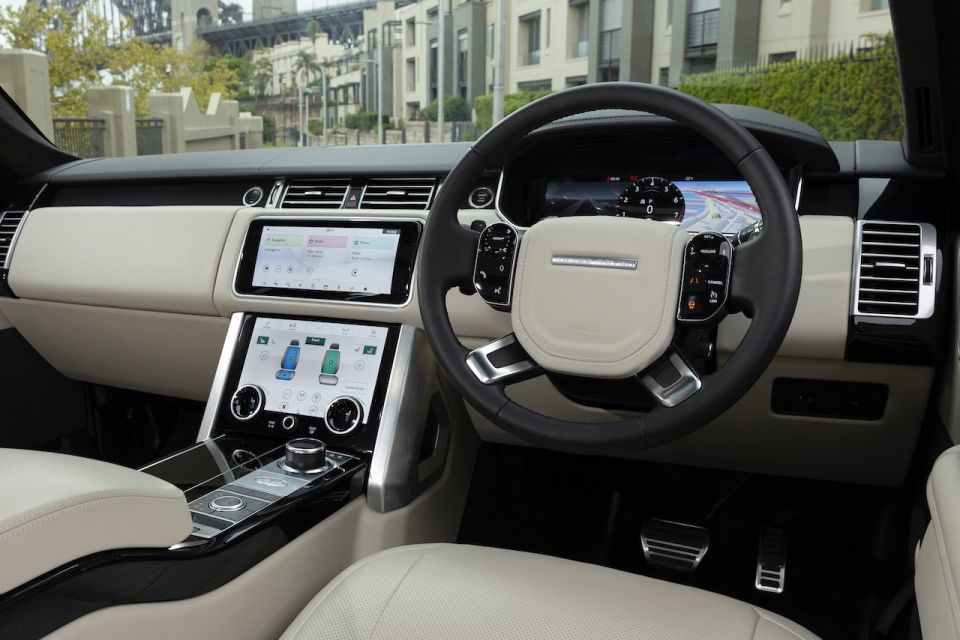

Further options included four-zone climate control ($2210), grey exterior accents ($1830), a sliding panoramic roof ($840), privacy glass ($830) and Grand Black veneer for $680 – bumping the total price up to $240,320 before on-roads.
Those options do tend to take the shine off a near entry-level variant. I’d argue none of them really make a difference bar the safety kit listed below, and the extra-special headlamps if you intend to rack up the highway kays at night.
If you’re the outdoorsy type, one option worth considering is Land Rover’s Activity Key ($920). It’s a waterproof wristband that can be submerged to depths of 18m, and doubles as a key, allowing surfers to leave their normal keys at home.
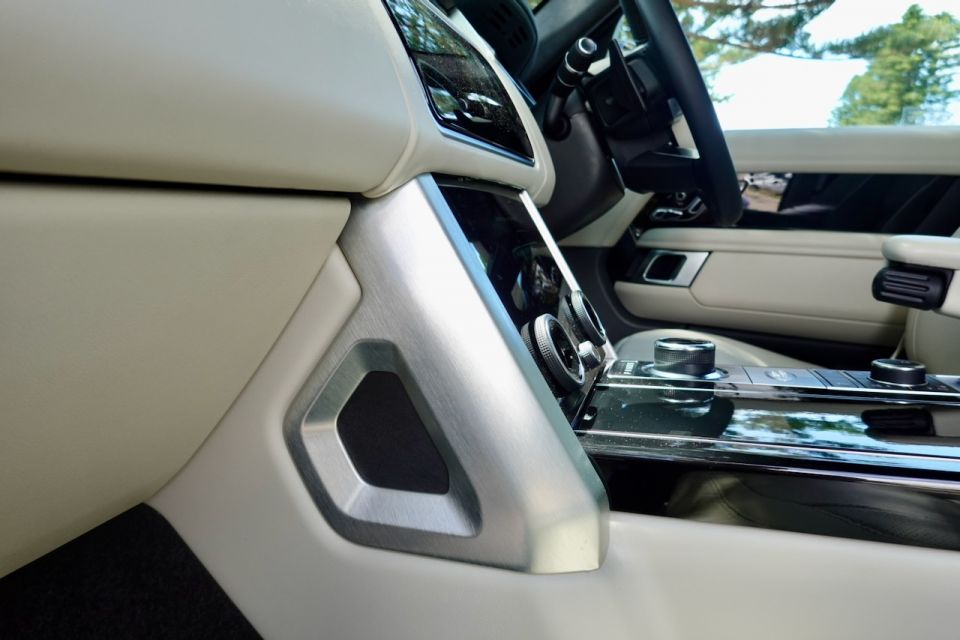
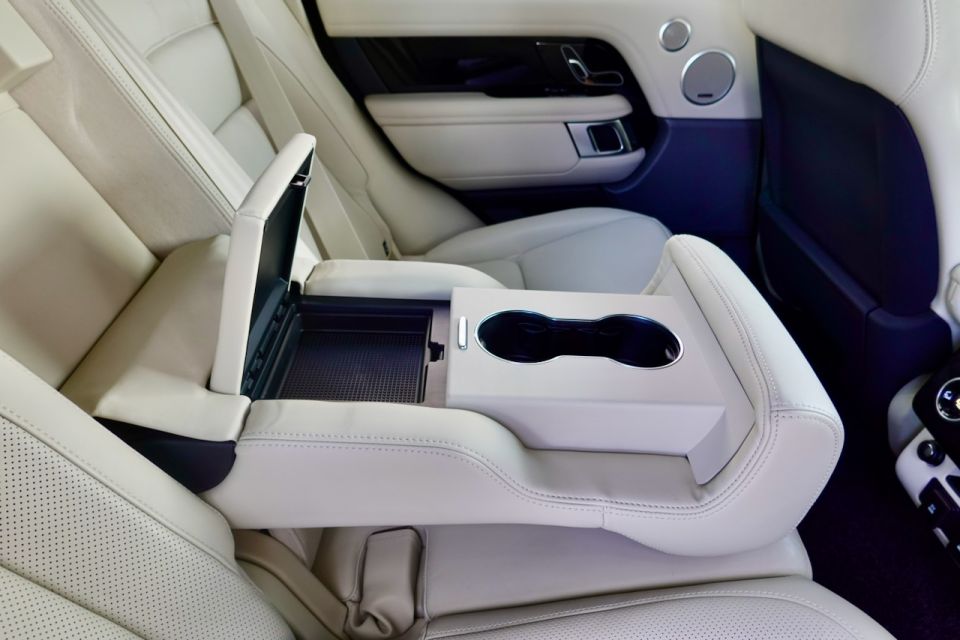
The last time ANCAP rated the Range Rover Vogue was 2013. It was awarded a full five-star rating, with an overall score of 36.19 from a possible 37 points.
We note these scores were based on crash tests of the left-hand drive TDV6 from Euro NCAP.
In the frontal offset crash it achieved a 15.9 out of 16, while the side impact test saw it get 16 out of 16.
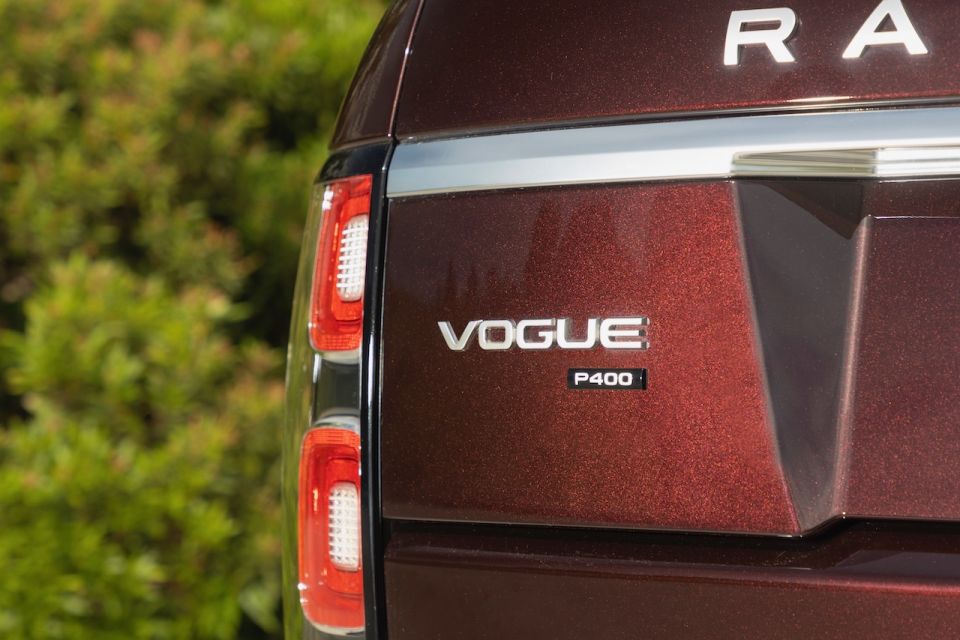
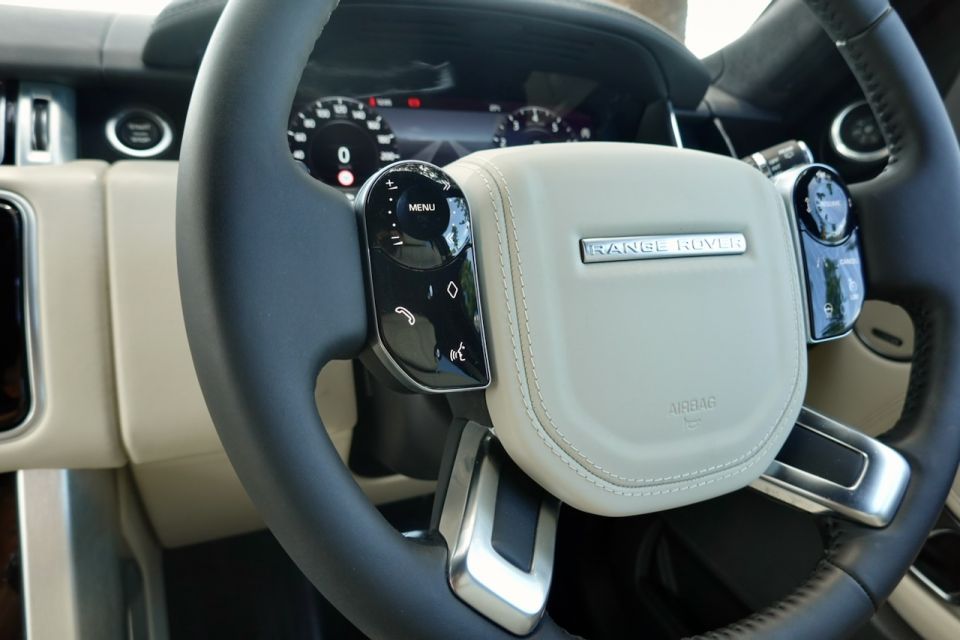
Standard safety kit includes six airbags, autonomous emergency braking (low speed), cruise control with a speed limiter, lane-departure warning, and a reversing camera with front and rear parking sensors.
Sadly, the more advanced active safety equipment common on less expensive makes and models is optional at this level of the Range Rover hierarchy as part of various packs.
Our tester was fitted with the Driver Assist Pack ($9445) which makes up for the rather alarming shortfall in safety tech that should be standard on a vehicle of this price, no question.
It includes blind-spot monitoring, a 360-degree camera, clear exit monitor, adaptive cruise control with steering assist, driver condition monitor, high-speed emergency braking, lane-keeping assist, parking assist, rear cross-traffic alert, and traffic sign recognition with an adaptive speed limiter.
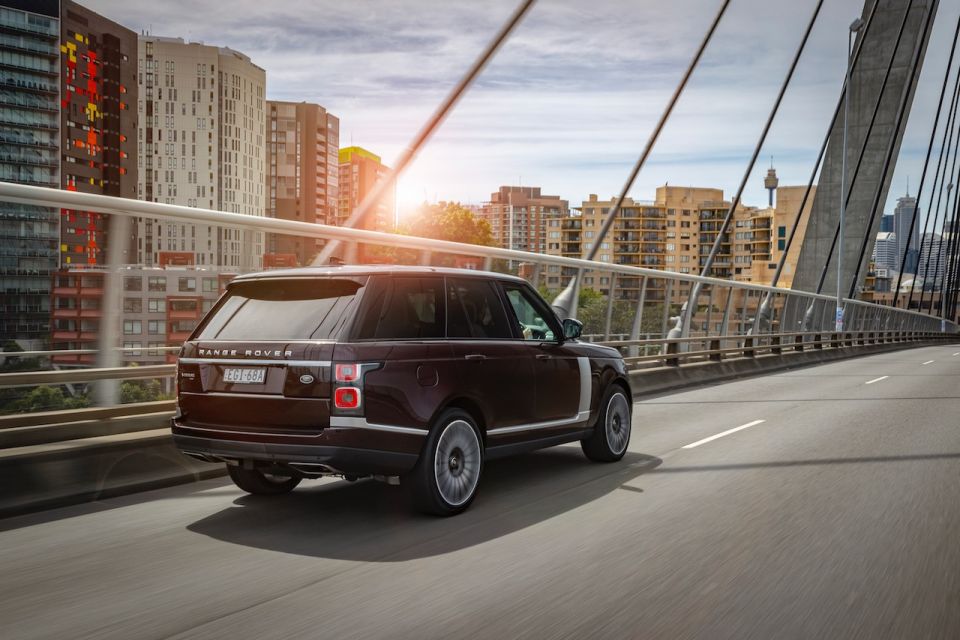
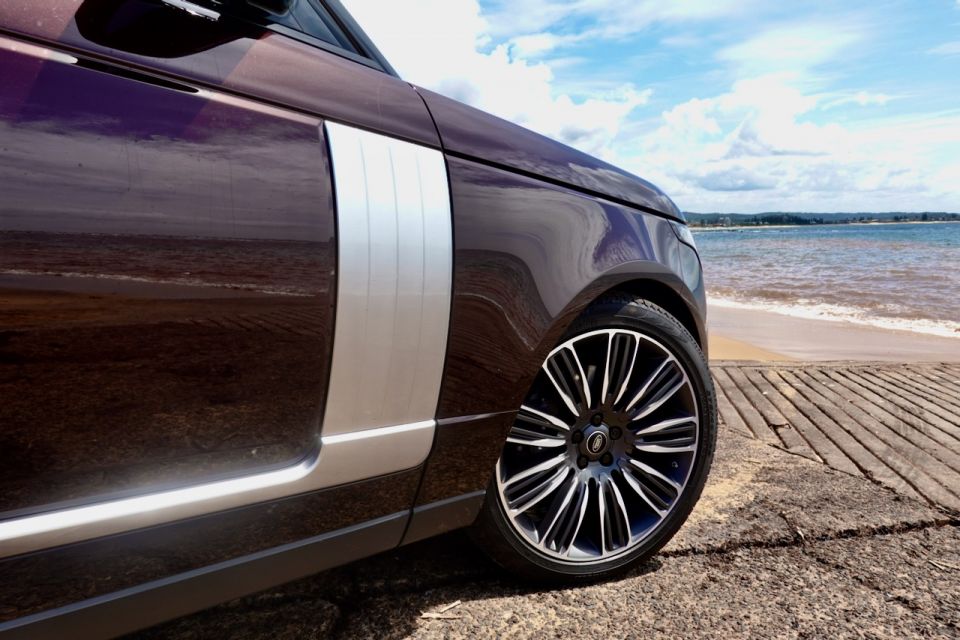
Where expert car reviews meet expert car buying – CarExpert gives you trusted advice, personalised service and real savings on your next new car.
The moment you climb aboard a full-size Range Rover you’ll understand what the fuss is about. It’s luxurious but tasteful – it doesn’t try too hard.
The driving position is like no other. It’s high, with a commanding view of the road ahead and everything else around you, but you feel like you’re still sitting in the vehicle rather than being perched atop it like some other makes.
At a smidge under five metres long with a maximum five-person carrying capacity, there’s a tonne of space inside the Range Rover Vogue.
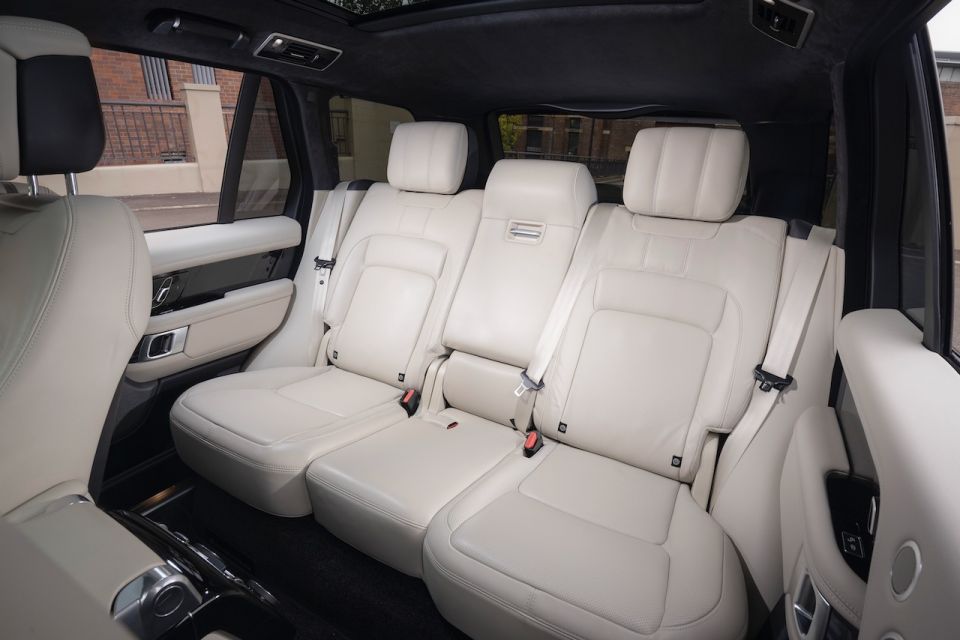
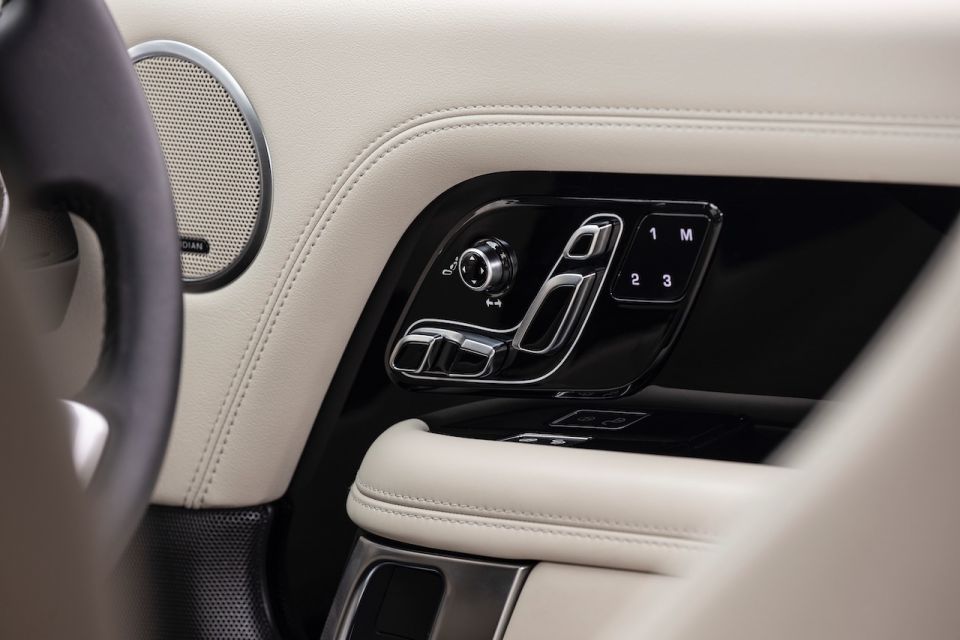
Rear leg- and headroom is more than sufficient to keep the taller membersin the family comfortable in long-haul travel, even if there are three adults across the second row.
The outer two chairs are as comfortable as the front seats, but the middle passenger will suffer from lack of shoulder room and seat width. Four big people can travel in absolute luxury, given there’s more space in the Range Rover than you’ll find in a Bentley Bentayga, despite its longer body.
When it comes to boot space there’s no contest. Even behind the second row there’s a staggering 900 litres. Fold the 60/40 split rear seats at the push of a button from either the lower screen up front or from the boot itself and it frees up a vast 1943L – enough for a solid visit to Costco or IKEA.
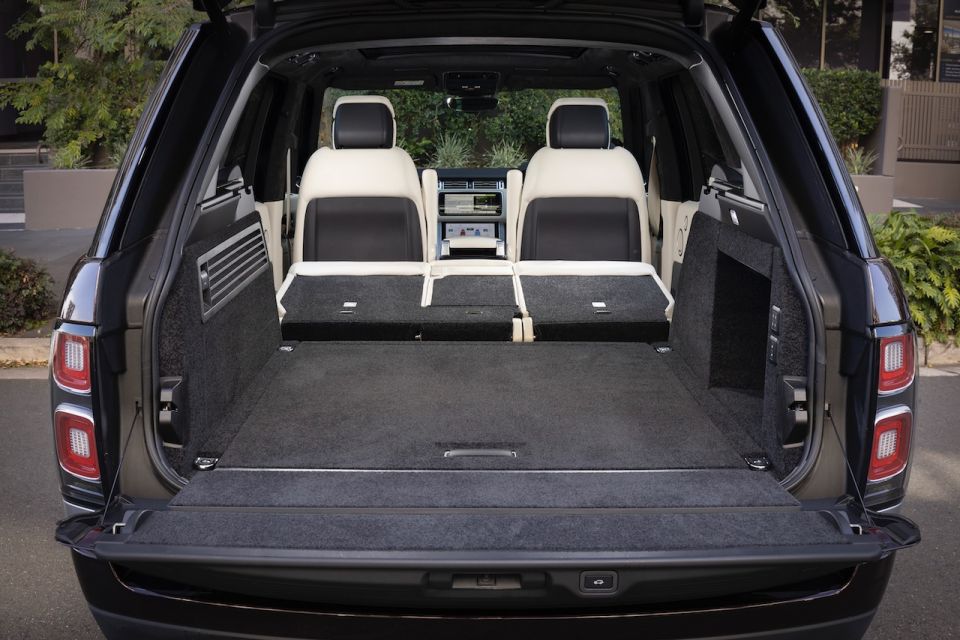
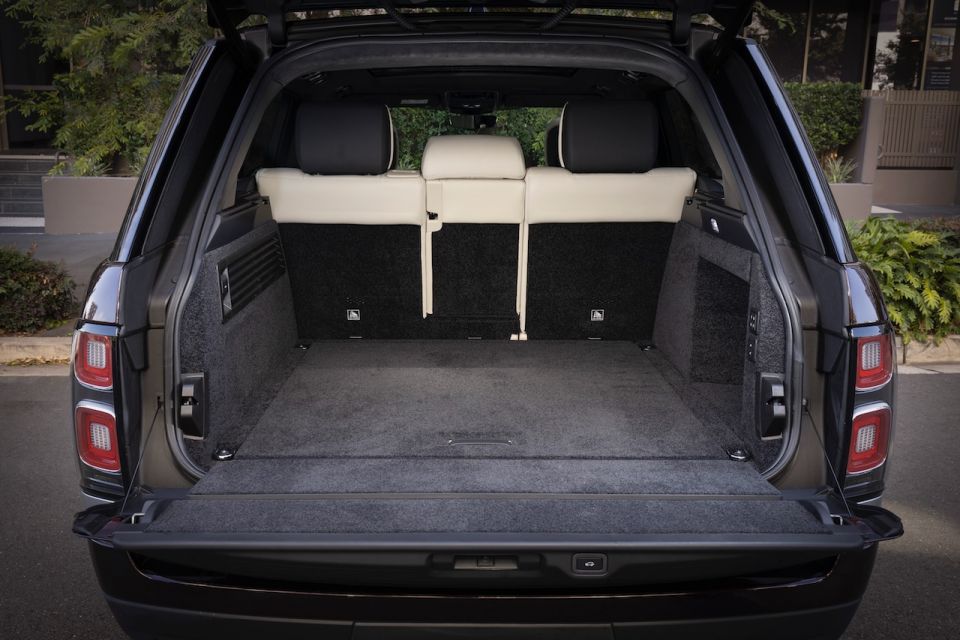
The trademark powered split tailgate is convenient in the sense you can open the bottom half for groceries or smaller boxes, as well as sitting on it for a coffee or a quick bite in these COVID-19 times.
There’s also a stack of flexible stowage options around the cabin, like the handy dual glove boxes or the front cupholders that can slide forward to reveal a deep storage area measuring 4.5L with a USB charging port.
All up there are 17 connection points throughout the cabin including two USB, an HDMI, and 12V ports in the front console alone. Not only that, there’s provision for up to eight 4G Wi-Fi connections – you could run a business from this thing.

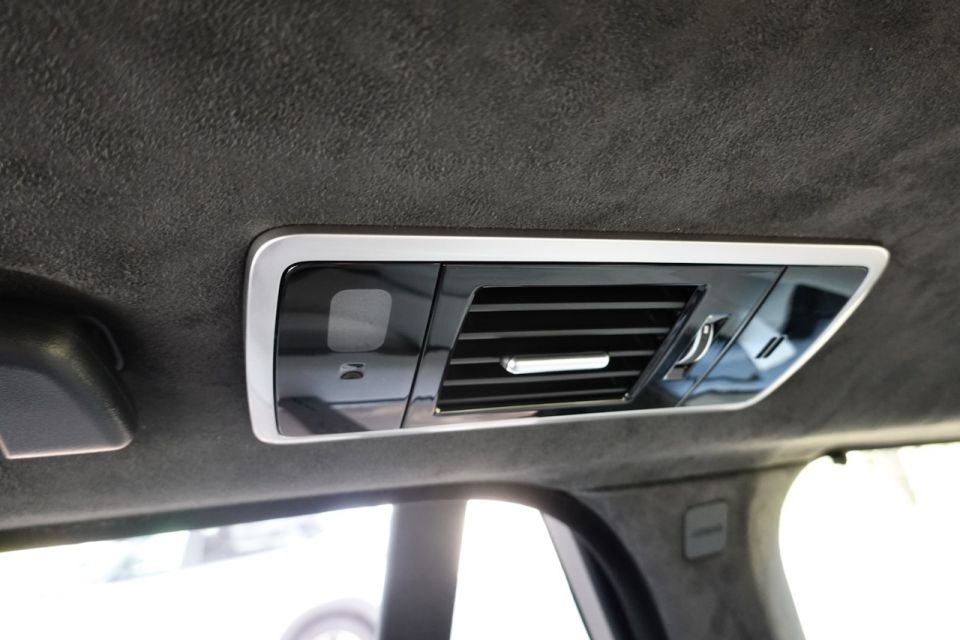
For rear seat passengers there are also two USB and HDMI points (no USB-C though, which is fast becoming the new norm) as well as two 12V connections and a proper domestic plug socket.
And, if you’re on a picnic or tailgating at an outdoor event there’s another domestic plug socket and 12V connection in the boot.
This is what makes the Range Rover Vogue P400 more interesting than its more expensive, powerful V8 stablemates. Not that it lacks anything in the performance stakes.
It gets the latest Ingenium 3.0-litre inline six-cylinder petrol engine combining a twin-scroll turbocharger and an electric supercharger with 48V mild-hybrid architecture for pretty much instant throttle response.
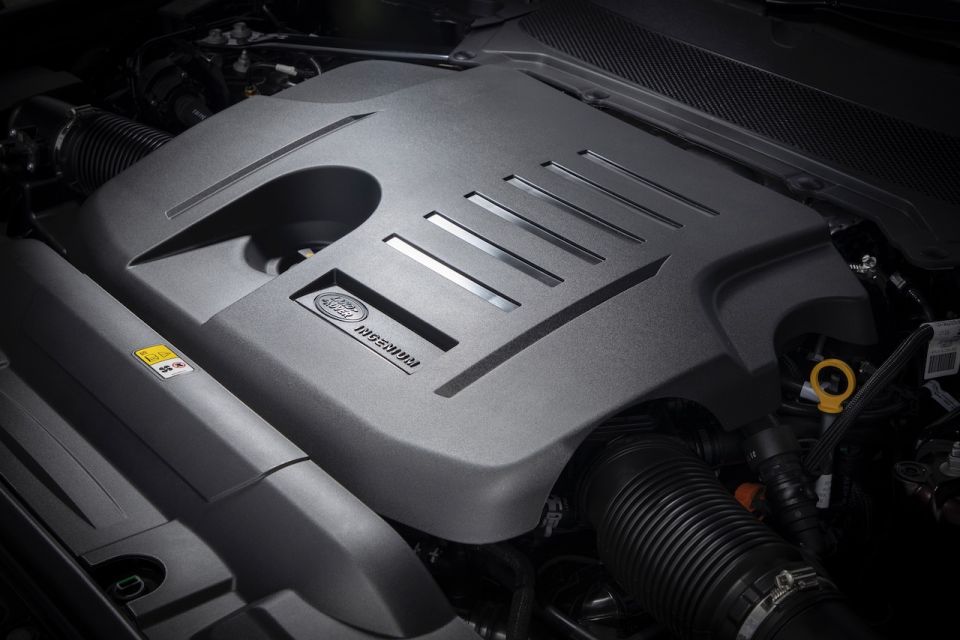

Generating a robust 294kW of power at 5500-6500rpm and 550Nm of torque from 2000-5000rpm, the least of any Range Rover.
We’ll see the same engine in the all-new Land Rover Defender which touches down locally in August.
Punch it – you’ll want to do that regularly in this thing – and the big Range Rover can hustle from 0-100km/h in a satisfying 6.3 seconds. Top speed is 225km/h. Remember, it tips the scales at 2342kg.
It gets out of the blocks very quickly with no discernible lag, and keeps on pulling regardless of how steep a hill you might want to climb. In my case, that’s Awaba Rd, Balmoral. The undisputed king of steep, at least in my part of the world.
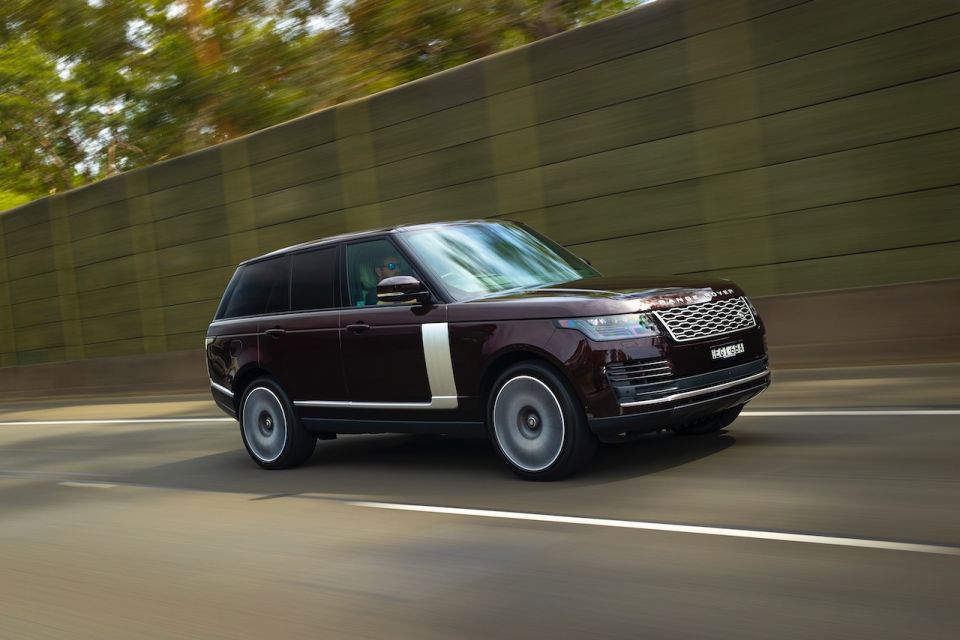
Mostly, it’s down to the electric supercharger. It produces immediate boost by spooling in 0.5 seconds up to 65000rpm, while working in concert with the turbocharger for what is also a super-smooth power delivery with strong boost in the mid-range. It’s hard not to be impressed.
A good deal of that smoothness comes down to Land Rover’s calibration of the ZF eight-speed transmission. It’s always been refined in the Range Rover, but married up to this new engine it’s hard to fault. The shifts are at times imperceptible even when using the paddle shifters in manual.
Throttle control and pedal feel allows for precise inputs. It doesn’t take long to develop a bit of an addiction to this powertrain, not just for the way it goes but for its genuine efficiency.

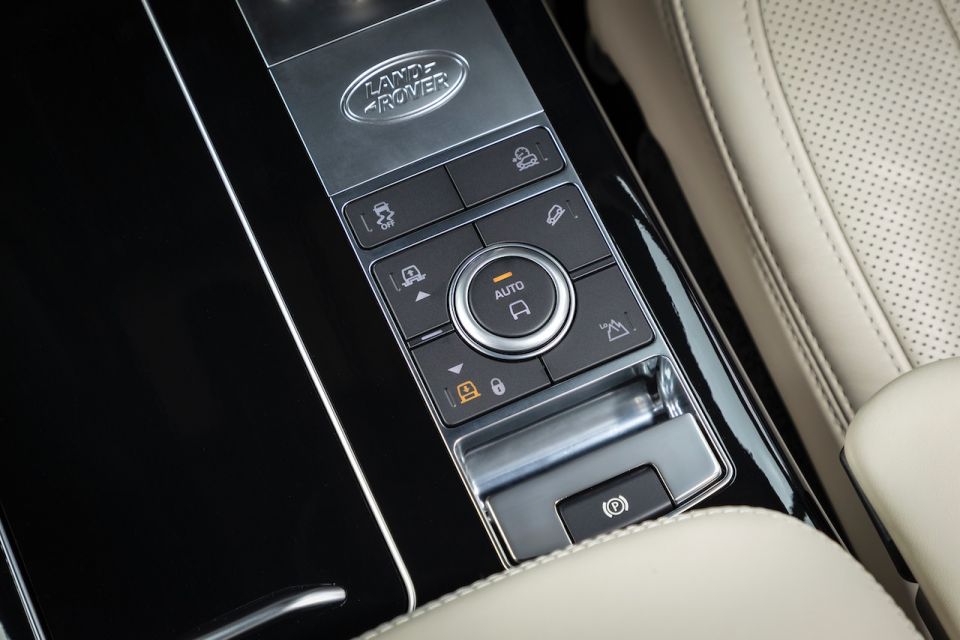
Land Rover claims fuel economy of 9.1L/100km combined, and without a lot of effort you’ll likely achieve close to that. Although if you enjoy its off-the-line launches you could see more than 15.0L/100km on the display.
If you’re like me and loathe start/stop technology don’t sweat it, because the 48V mild-hybrid technology features a belt-starter generator for extended engine shut-offs and smooth, fast, quiet restarts.
Notwithstanding the latest engine powertrain technology and sublime luxury, Range Rover has generally held the upper hand against its fiercest rivals when it came to ride comfort, regardless of conditions. The good news is nothing has changed, even at the bottom end of the line-up.
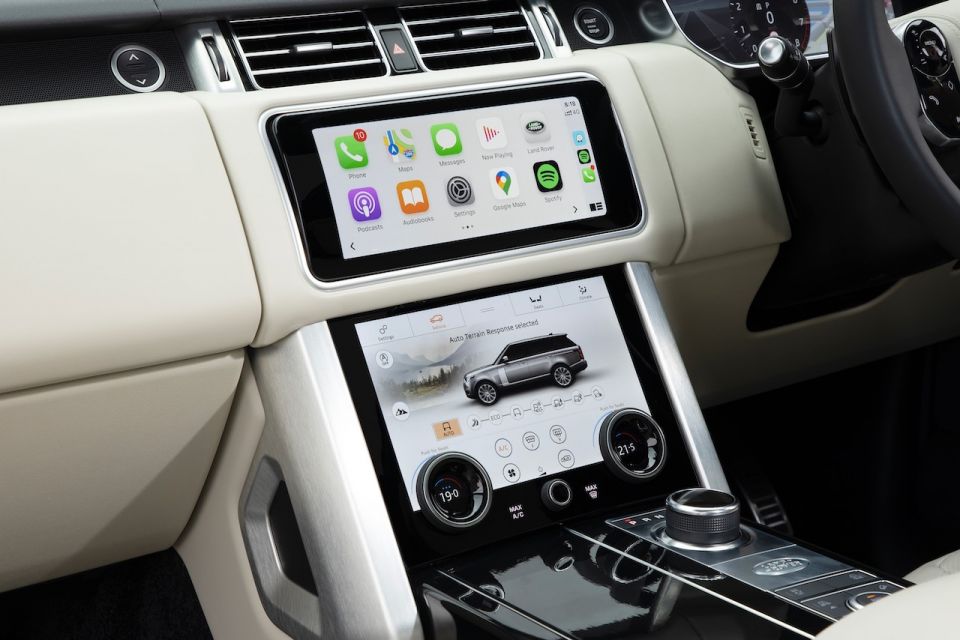
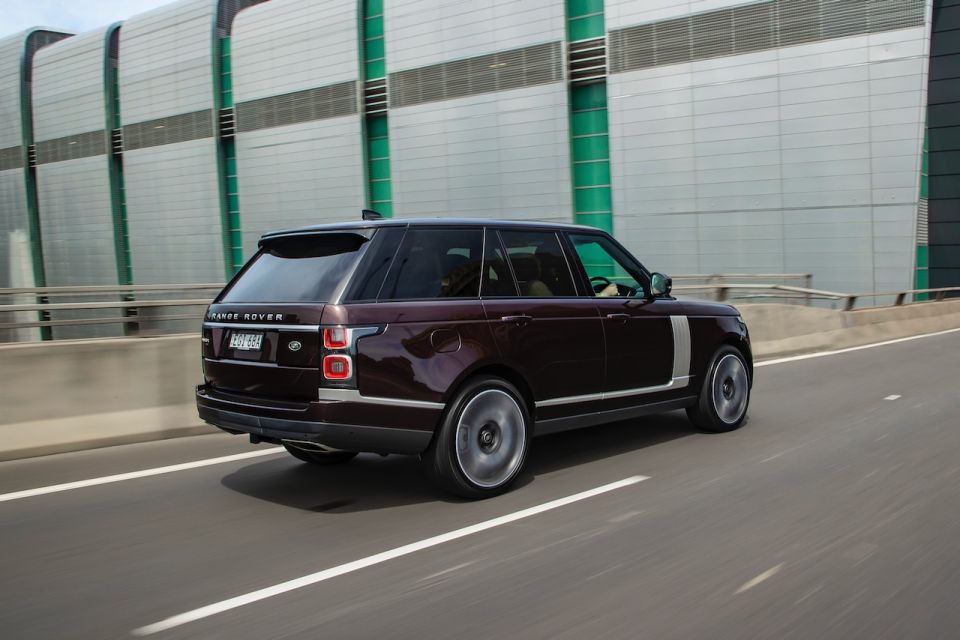
Land Rover’s electronic air suspension is as good as gets – regardless of how much care to spend on a luxury SUV. Bumps and broken road simply aren’t felt inside the cabin. So much so, you’ll find yourself barely slowing down for speed bumps.
Oddly enough, it doesn’t feel heavy from behind the wheel, at least not as you might expect. It’s not nimble, but with this powertrain quite agile, with good steering response and weighting.
Switching to Dynamic using the lower touchscreen firms up the chassis immediately, the result of which is less body roll and a greater willingness to be hurried through roundabouts, but you’re more acutely aware of any imperfections in the road. It’s a sharper ride for sure.
Like most Range Rover owners in Australia, I didn’t venture off the beaten road for this test. But I’ve done plenty of it previously in some of the most inhospitable conditions on earth, both in Australia’s outback and in the UK and Scotland with the same result when it comes to ride comfort.
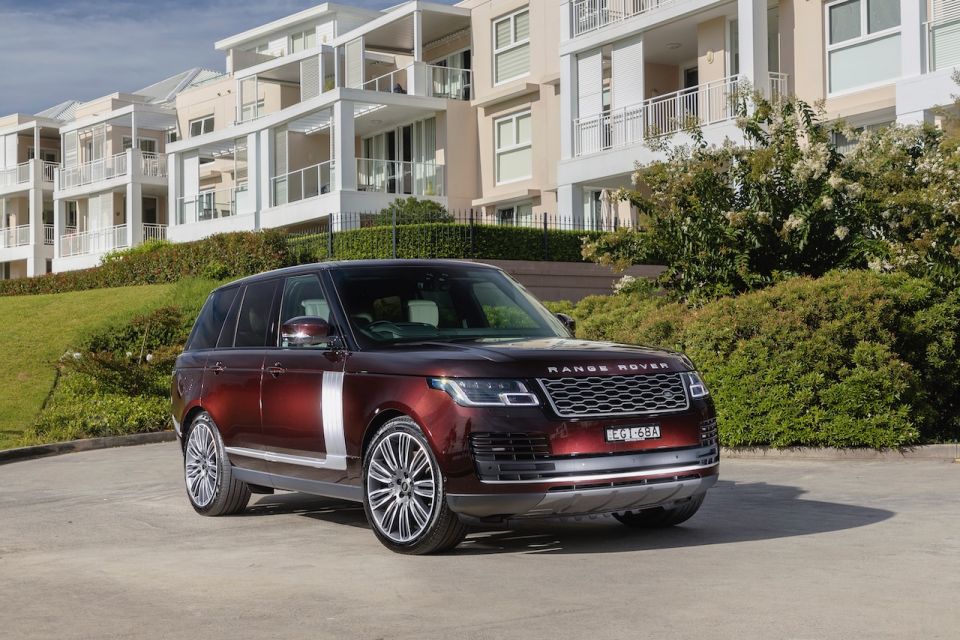
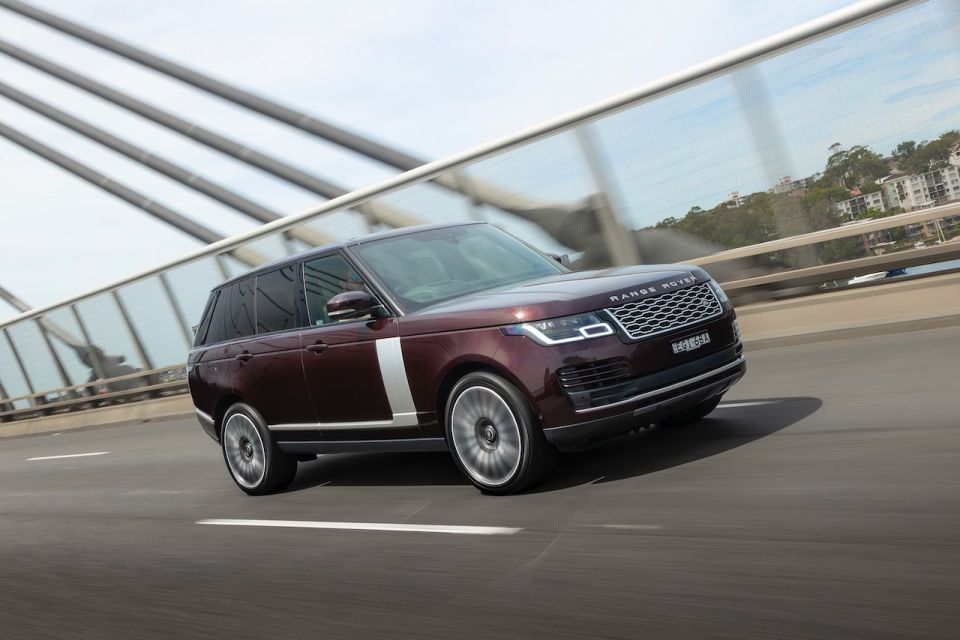
I’d go further and say its ability to drive over rocks, mud, and rivers while providing the same peerless level of suspension compliance is nothing short of extraordinary.
Towing capacity is unchanged at 3500kg with a host of technology on board like trailer stability assist.
Ordinarily Land Rover offers a three-year/100,000-kilometre new-car warranty, but at the time of writing this review (and until June 30) the entire Land Rover range is covered by a five-year, unlimited-kilometre warranty.
Again, we would suggest three-year warranty periods don’t cut it these days, given Mercedes-Benz has moved to a permanent five-year warranty period for all its passenger models.
Land Rover doesn’t publish service intervals. Rather, the vehicle informs the owner when it’s due, but scheduled servicing on Range Rovers is complimentary for five years up to 130,000km, along with three years roadside assist.
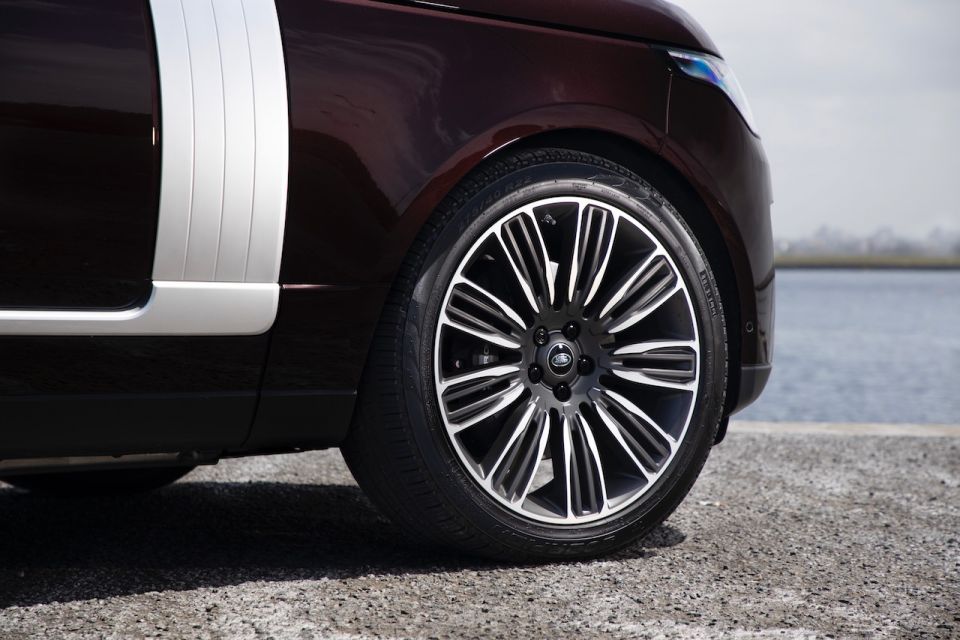
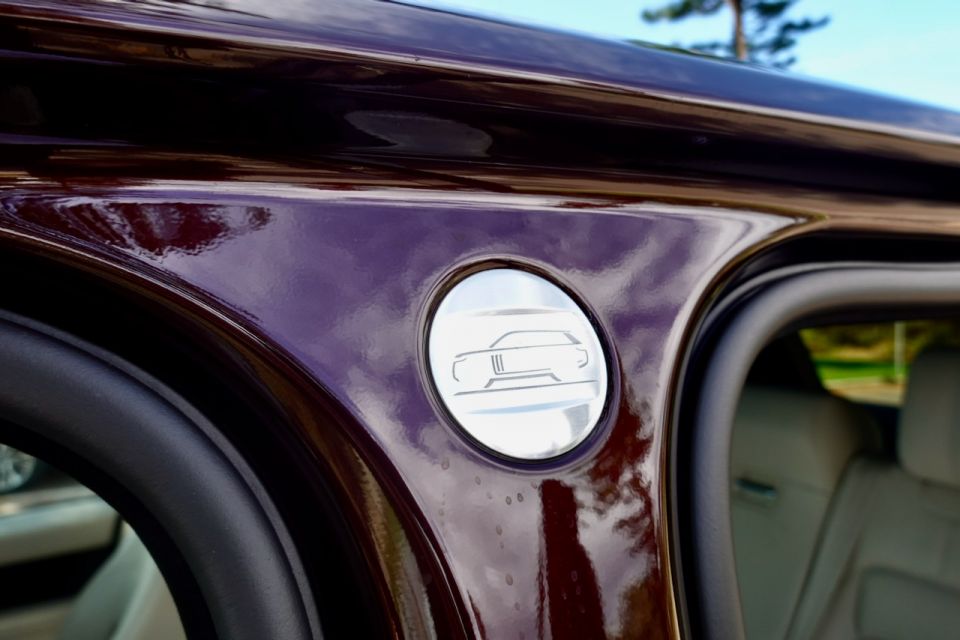
Few would argue with the notion that current Range Rover is near to a perfect evolution of an automotive icon.
Whereas not so many years ago a full-strength Rangie wasn’t complete without a large V8 under the bonnet, this new mild-hybrid six is a game-changer.
Performance, refinement, and efficiency – it’s all there in one of the least expensive variants in the line-up. It even sounds good.

There are a host of similarly-sized luxury haulers for less money with more performance, but that’s always been the case. The Range Rover is almost a segment all on its own, and notoriously difficult to compare.
And, let’s not forget a new fifth-generation Range Rover is due some time in 2021.
Where expert car reviews meet expert car buying – CarExpert gives you trusted advice, personalised service and real savings on your next new car.
Anthony Crawford is a CarExpert co-founder and senior presenter with 20+years in automotive journalism and content creation.


Ben Zachariah
7 Minutes Ago
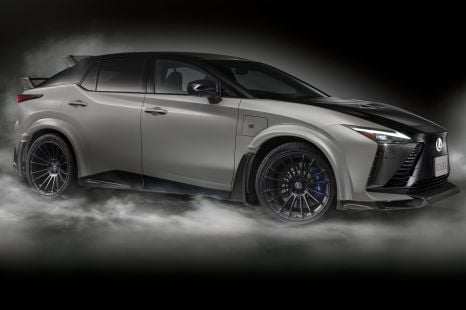

Derek Fung
37 Minutes Ago
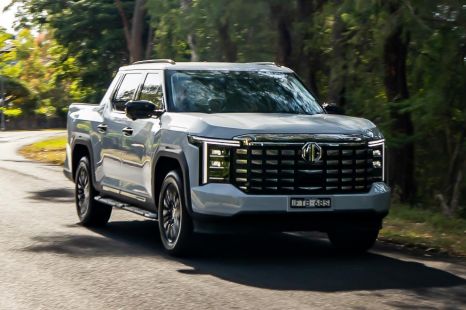

Matt Campbell
7 Hours Ago
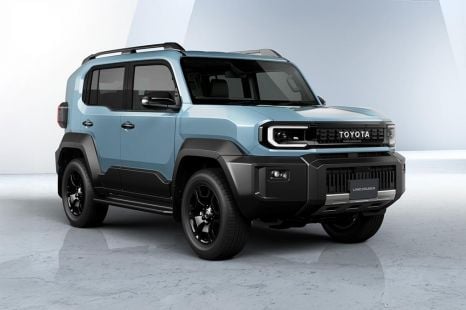

William Stopford
23 Hours Ago
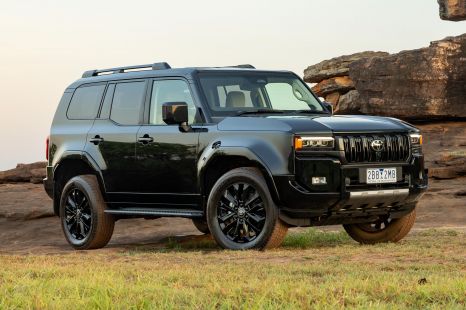

Josh Nevett
1 Day Ago


Ben Zachariah
2 Days Ago